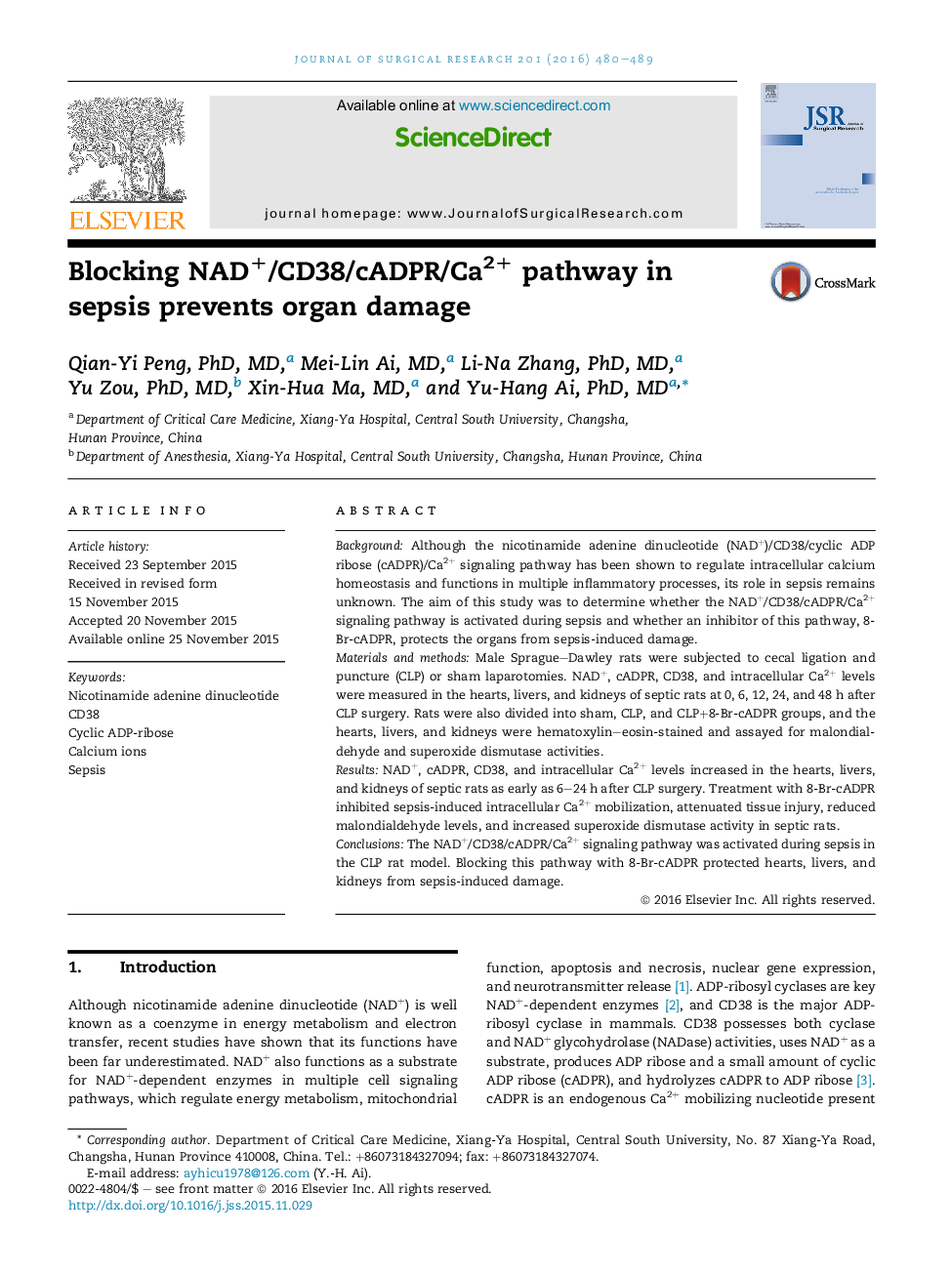| Article ID | Journal | Published Year | Pages | File Type |
|---|---|---|---|---|
| 4299403 | Journal of Surgical Research | 2016 | 10 Pages |
BackgroundAlthough the nicotinamide adenine dinucleotide (NAD+)/CD38/cyclic ADP ribose (cADPR)/Ca2+ signaling pathway has been shown to regulate intracellular calcium homeostasis and functions in multiple inflammatory processes, its role in sepsis remains unknown. The aim of this study was to determine whether the NAD+/CD38/cADPR/Ca2+ signaling pathway is activated during sepsis and whether an inhibitor of this pathway, 8-Br-cADPR, protects the organs from sepsis-induced damage.Materials and methodsMale Sprague–Dawley rats were subjected to cecal ligation and puncture (CLP) or sham laparotomies. NAD+, cADPR, CD38, and intracellular Ca2+ levels were measured in the hearts, livers, and kidneys of septic rats at 0, 6, 12, 24, and 48 h after CLP surgery. Rats were also divided into sham, CLP, and CLP+8-Br-cADPR groups, and the hearts, livers, and kidneys were hematoxylin–eosin-stained and assayed for malondialdehyde and superoxide dismutase activities.ResultsNAD+, cADPR, CD38, and intracellular Ca2+ levels increased in the hearts, livers, and kidneys of septic rats as early as 6–24 h after CLP surgery. Treatment with 8-Br-cADPR inhibited sepsis-induced intracellular Ca2+ mobilization, attenuated tissue injury, reduced malondialdehyde levels, and increased superoxide dismutase activity in septic rats.ConclusionsThe NAD+/CD38/cADPR/Ca2+ signaling pathway was activated during sepsis in the CLP rat model. Blocking this pathway with 8-Br-cADPR protected hearts, livers, and kidneys from sepsis-induced damage.
